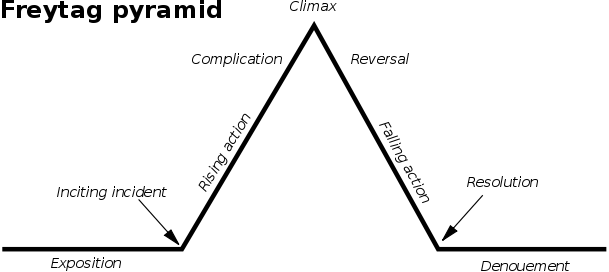TODAY’S PROMPT
Write a narrative that begins with this line: They both wanted what only one could have.
The Art of Narrative Craft
Write a narrative that begins with this line: They both wanted what only one could have.
We have already read a story, London’s “To Build a Fire,” in which the setting (the wintry northwest forest) actually becomes a character in the story, and not just a character, but the antagonist. In the exemplary stories that follow, the setting takes over the story, almost as if it is a character in the story. Hemingway’s “A Clean, Well-Lighted Continue reading STORIES FOR SETTING
I. Begin a story that is set in an unusual time and place, so that you must absolutely let your reader know that, hey, this isn’t here and now, but there and then. Can you do this without the obvious This is Gettysburg, Pennsylvania during the Civil War? II. Begin a story whose setting is a ‘character’ in the narrative, Continue reading PROMPTS FOR SETTING
SETTING Every story takes place somewhere. And yet every year I receive manuscripts from learning writers that seem to take place nowhere, that is to say, without any narrative depiction of the time and place wherein which the present action of the narrative occurs. What exactly do we mean by Setting? Here it is: SETTING = TIME and PLACE What Continue reading II. SETTING
Now, let’s see how a couple of real masters handled these elements of story and plot, and the elements of dramatic structure (conflict-crisis-resolution). In Jack London’s “To Build a Fire” and James Joyce’s “Araby” all the elements of dramatic structure are evident as the stories build from the conflict to the crisis and resolution. Stories that illustrate the techniques of Continue reading STORIES FOR STORY, PLOT, AND STRUCTURE
Write a short narrative concerning the following dramatic situation: A package delivered to the wrong person.
I. Write a 6 sentence narrative wherein each sentence represents a plot point on Freytag’s Pyramid: 1. Exposition (introduce character w. desire) 2. Conflict (antagonist) 3. Rising Action (complications) 4. Crisis Moment (moment of truth/choice) 5. Falling Action (consequences) 6. Resolution (end result) II. Using your response to the above exercise, begin your story by introducing your protagonist, her desire, Continue reading PROMPTS FOR STORY, PLOT, STRUCTURE

ANALYZING PLOT: CONFLICT-CRISIS-RESOLUTION (FREYTAG’S PYRAMID): Two stories that illustrate the ways that conflict-crisis-resolution can work in the best fiction are Jack London’s “To Build A Fire” and James Joyce’s “Araby.” Each is available to read online, and each contains the essential elements of the short story. What are these elements? At the beginning we want to be introduced to a Continue reading I. STORY, PLOT, STRUCTURE: Conflict-Crisis-Resolution
Write a short narrative that begins with this line: Nobody remembers this, but…
JOURNAL ENTRY VS. STORY (OR, WHAT I DID THIS WEEKEND VS. CONFLICT-CRISIS-RESOLUTION Young writers often ask about the difference between writing a journal and writing a story. This highlights what I think is one of the most important aspects of writing. When teaching writing workshops this is something that I come back to time and again. Beginning writers are Continue reading I. STORY, PLOT, STRUCTURE: (Journal Entry vs. Story)